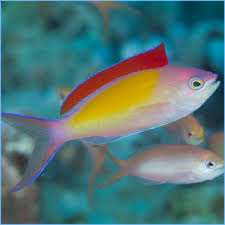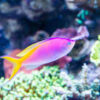Dragons and Their Connection to Ice and Snow Mythologies: A Symbol of Power, Chaos, and Renewal

Dragons, one of the most iconic creatures in global mythology, have been depicted in numerous forms across cultures, often embodying themes of power, chaos, protection, and transformation. Among the many diverse roles dragons play in myths, one of the most fascinating connections is their link to ice and snow—two elements that embody the forces of cold, destruction, and renewal. In various traditions, dragons are not merely creatures of heat and fire, but also beasts of winter and frost, capable of controlling blizzards, storms, and even shaping the frozen landscapes of the world.
In this article, we will explore the connection between dragons and ice, focusing on the myths, legends, and symbolic roles dragons play in stories associated with snow and ice. These stories highlight the dragon as a figure of dual power—one that can both destroy and renew the world, often through the forces of frost and cold.
The Mythological Duality of Dragons: Fire and Ice
Dragons are often associated with the element of fire, symbolizing destruction, energy, and power. However, in many mythologies, they also have a profound connection to ice and cold, embodying the harsh forces of winter and the frozen landscapes that can both destroy and preserve life. This duality reflects the balance of nature, where dragons represent the force that governs both creation and destruction in equal measure.
In many cultures, dragons are shapeshifters, able to manipulate the natural world and adapt to different environments. This versatility allows dragons to be agents of change, transitioning from beings of flame to creatures of frost. Their ability to influence both fire and ice reinforces their importance as guardians of the natural world, controlling the delicate balance between the forces of life and death.
The Frost Dragons of Norse Mythology
One of the most notable mythologies where dragons and ice are closely intertwined is Norse mythology, which features some of the earliest and most influential ice dragons. In Norse legend, dragons are often connected with the primordial chaos that existed before the world was created.
According to Norse cosmology, the world began in the realm of Muspelheim, a land of fire, and Niflheim, a land of ice. Between these two realms lay the Ginnungagap, a vast void that eventually gave birth to the first beings, including the ice giant Ymir. From the melting ice and the fires of Muspelheim, various creatures and gods were born, with the dragons of ice often being seen as embodiments of this primordial chaos.
One of the most famous ice-related dragon myths from Norse tradition is the story of the Nidhogg, a dragon who gnaws at the roots of the World Tree (Yggdrasil), threatening to bring about the end of the world. While Nidhogg itself is not explicitly described as an ice dragon, it represents the destructive forces associated with cold and decay in Norse cosmology. The dragon’s actions symbolize the slow, inevitable corruption and erosion of the world, which can be seen as a metaphor for the icy, destructive forces of nature that wear away at the foundation of existence.
Additionally, in the Elder Edda, a collection of Old Norse poems, Jörmungandr, the Midgard Serpent, is another dragon-like creature that is said to live in the frozen ocean surrounding the world. This creature is tied to the forces of chaos and destruction, with its enormous size and venomous nature representing the cold, harsh reality of nature’s destructive power.
The Slumbering Frost Dragons of Eastern Mythology
In Eastern mythology, particularly within the Chinese and Japanese traditions, dragons are often seen as benevolent forces. However, some myths also depict dragons as creatures tied to ice and cold, particularly in the legends of sleeping dragons that represent long winters or the eternal frost. These dragons are believed to lie dormant in frozen landscapes, their awakening signifying the return of warmth and spring.
In Chinese mythology, dragons are traditionally associated with rain and water, both vital for agricultural prosperity. However, certain stories involve winter dragons, which are linked to snowfall and ice storms. These dragons are thought to hibernate during the cold months, only to emerge with the return of spring. The dragon’s awakening is a metaphor for the gradual melting of snow and ice, symbolizing the end of winter and the return of life and growth.
Similarly, in Japanese folklore, the dragon gods of water are sometimes associated with the seasonal transitions, including winter. Ryujin, the sea dragon god, controls the tides and weather, and in some legends, he is said to bring snowstorms during the winter months. The snow dragon’s connection to the winter season is emblematic of the cyclical nature of life, death, and rebirth, with the dragon representing both the power to destroy and the potential for renewal.
Ice Dragons in European Folklore
In European folklore, dragons have a more antagonistic role, often appearing as creatures of chaos and evil. However, many of these dragons are also connected to frost, snow, and the forces of winter, making them embodiments of the cold, destructive forces that ravage the land.
One of the most well-known examples comes from Slavic mythology, where the Zmey Gorynych—a multi-headed dragon—is often associated with the frozen landscapes of the Russian and Slavic territories. Zmey Gorynych is depicted as a fire-breathing creature, but its presence is also linked to the long, harsh winters that plague the land. In these stories, dragons are often feared as creatures that bring death, particularly during the coldest months of the year.
In Celtic mythology, dragons are also tied to the ice and snow that govern the winter months. In some Welsh legends, dragons are said to sleep during the winter, only to awaken in the spring to bring fertility and life. Their long slumbers in the frozen earth represent the stillness and quiet of winter, while their awakening symbolizes the return of warmth and the rejuvenation of the land.
Dragons and the Element of Ice in Modern Fantasy
In modern fantasy literature, the depiction of dragons as creatures tied to ice and cold has gained increasing popularity. One of the most notable examples is George R. R. Martin’s “A Song of Ice and Fire” series (popularized by the TV series Game of Thrones), in which dragons play a central role in the battle between fire and ice. The series introduces ice dragons, mythical beings that represent the icy forces of the world, often linked to the White Walkers—beings that control winter and death.
The concept of ice dragons in Martin’s world is heavily influenced by ancient myths where dragons are believed to control both heat and cold. In these stories, dragons have the ability to bring about cataclysmic events, such as winters that last for years, echoing the destructive aspects of winter mythology found in Norse and Slavic traditions.
Dragons as Protectors of the Frozen Realms
In some cultures, dragons are seen not only as symbols of destruction but also as protectors of the cold and snow. In Norse and Scandinavian mythology, dragons are sometimes depicted as guardians of icy realms or frozen treasures, often hidden deep within mountains or glaciers. These dragons are viewed as keepers of ancient knowledge and precious resources, serving as protectors of the cold domains they inhabit.
For example, in Icelandic sagas, dragons are sometimes described as guardians of frozen landscapes, where they protect ancient wisdom and artifacts. In these stories, dragons maintain the balance between the forces of ice and fire, ensuring that neither one dominates over the other for too long.
Conclusion: The Timeless Connection Between Dragons and Ice
The connection between dragons and the realms of ice and snow spans multiple cultures and mythologies, symbolizing a dual role as both creators and destroyers. Whether seen as bringers of frost and chaos, or protectors of the cold, dragons embody the fragility and strength of the natural world. These mythical creatures remind us of the cycles of life, from destruction to renewal, and the delicate balance that governs the forces of nature.
In myths and stories of ice and snow, dragons are not merely beasts of terror but are profound symbols of the mysterious and powerful forces that shape our world. Their connection to winter weather, snowstorms, and frozen landscapes highlights their role in the cosmic balance between opposing forces—heat and cold, life and death, destruction and creation. As symbols of timeless power, dragons continue to capture our imaginations, reminding us of the vast and unpredictable forces that define the natural world.


